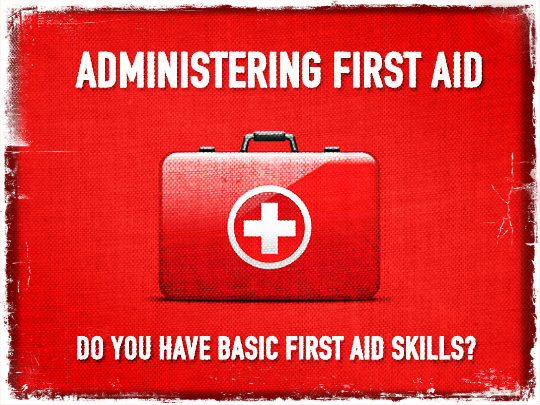
First, ask yourself, do you have basic first aid skills, first aid supplies and a willingness to render aid to someone who is injured. If you simply have no skills at all, or fear to give aid, but want to learn to overcome your fear or reluctance then it is important that you take accredited classes.
Reading about giving first aid, or watching videos online could mean you are receiving information that is not correct and this could have serious consequences.
For more information on classes and where to find one near you visit, http://www.redcross.org/ux/take-a-class
You need some experience so you “do no harm”. This means you know enough not to move certain injured persons, for example, which may result in greater injury. You need to know the level of your own training, and have the ability to assess the injured person to some extent. The objective is to preserve life and to prevent further injury. Typically, you would not move an injured person if there is no need to move him or her.
Obviously, there will be situations where not moving an injured person would result in certain death, such as when a person is trapped in a burning car or structure. Decisions have to be made quickly, and having training and some experience means you are more likely to make the right decision.
Remember you can render aid to an injured person by simply comforting them if you do not have any skills, or are hesitant for any number of reasons to render aid. It is a choice you have to make, and in some cases there are ramifications when giving aid, so it is important once again that you take classes, learn the laws, and build skills, which will lead to greater confidence.
You want to preserve the life of the injured person, but you also want to preserve your own, and the life of others that may be helping. Before rushing to help you have to make sure the situation unfolding will not cause you injury or even death.
Situational Awareness
Other countries and people not friendly to us have learned from past conflicts how Americans treat their wounded. On the battle field if an American soldier is wounded medics rush to their side. The enemy knows this, and this is one of the reasons antipersonnel mines are often times designed to maim/injure and not necessarily kill. The enemy knows that a soldier’s comrades will render aid and this means soldiers are distracted from the battle and are grouped in one place.
The enemy also knows that killing or injuring a medic has a psychological effect on troops, so what better way to lure out the medics and Causality Evacuation (CASEVAC) helicopters or other methods of transporting the injured then having troops injured. The hard reality is that dead people do not need aid, so injured personnel create more chaos than dead people do, and injuries tie up soldiers or even first responders who would otherwise be engaged in the situation at hand.
Terrorist will stage attacks so they can kill or maim those rushing to give aid after an attack.
You have to assess the situation before rushing to give aid. People at traffic accidents will rush across busy highways endangering themselves and others to help those injured. You have to ensure your own safety. You becoming injured means you are of no help to those you are trying to help, and of course, you certainly do not want to become injured. Parents are instructed to take the oxygen mask and place it over their own faces first, so they stay conscious to help their children when on an aircraft.
In a SHTF situation there may not be medical professionals on hand, no one to call, no hospitals or first aid stations, so it is on you.
Rushing in sometimes can lead to more injuries or death, but you only have seconds to evaluate any situation, and to do so effectively you need certain skill sets. You need skills, knowledge and above all you must have practiced rendering aid under various conditions.